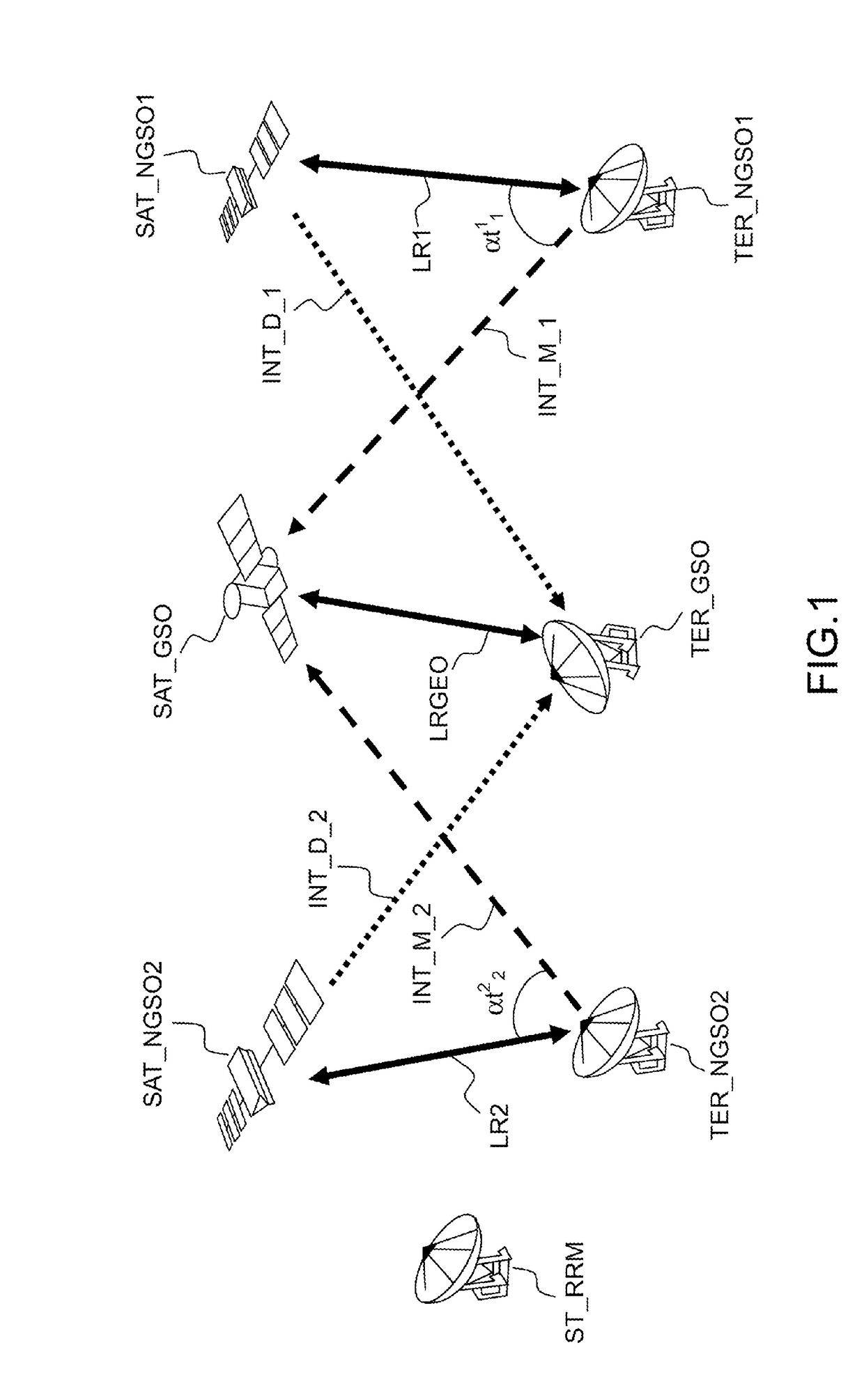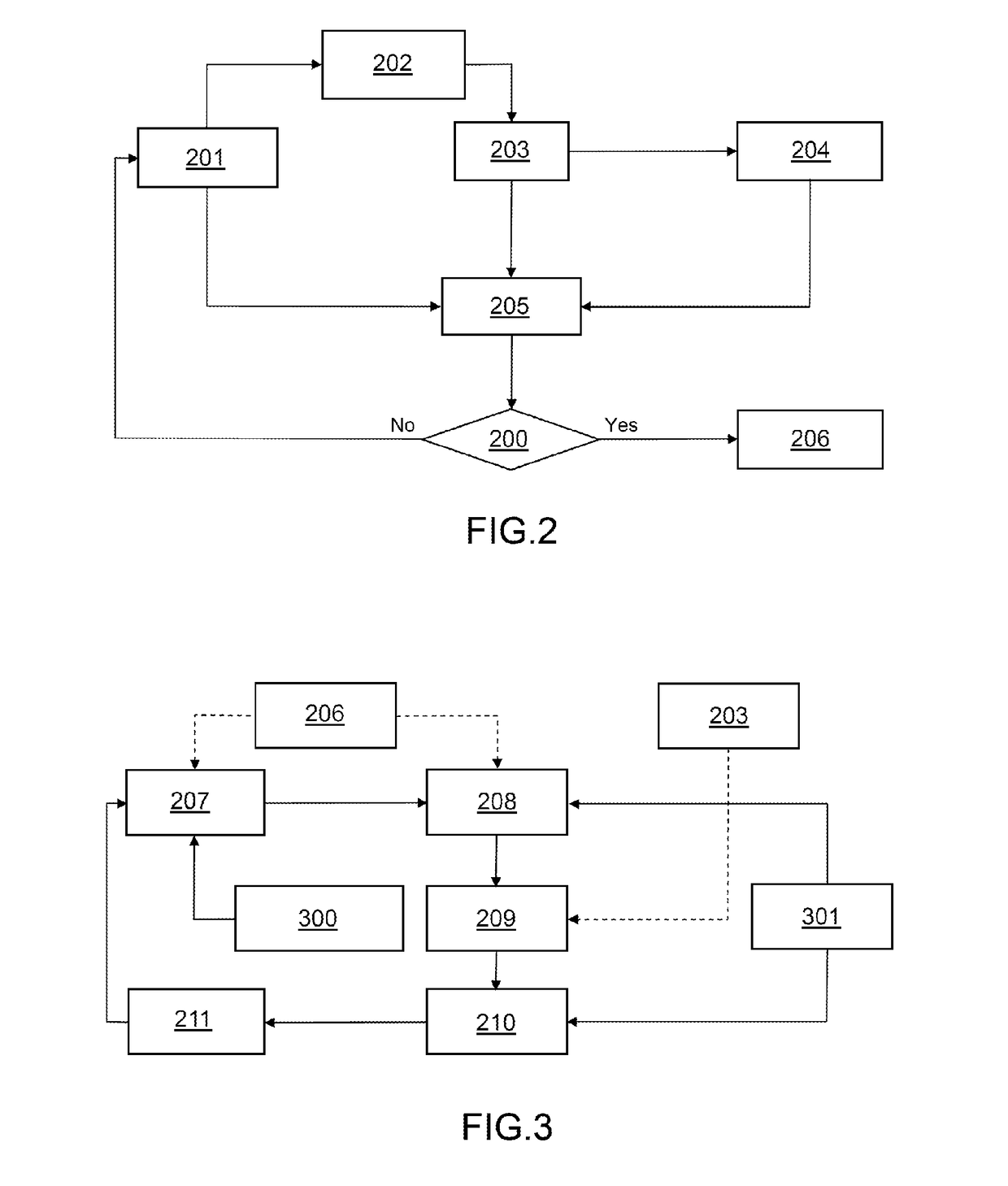Method for allocating radio resources in a communication system using non-gso satellites with interference level constraint to a geostationary system
a communication system and satellite technology, applied in the field of satellite communication systems, can solve the problems of reducing the geographic coverage of the non-geostationary system, affecting the operation of the communication system, so as to reduce the interfering power level of the s
- Summary
- Abstract
- Description
- Claims
- Application Information
AI Technical Summary
Benefits of technology
Problems solved by technology
Method used
Image
Examples
first embodiment
[0145]According to a variant of the invention as described in FIG. 4, the step 411 is modified to take into account the cases where, when a separation angle threshold is restored to its value on the preceding iteration, a situation is obtained in which the terminal considered can no longer communicate with any satellite without infringing this threshold. In other words, no satellite is compatible with the separation angle threshold value for the terminal considered.
[0146]To take this possibility into account, the step 411 is modified as follows. For each terminal of the list identified in the step 410, the value of the separation angle threshold is restored to the value set on the preceding iteration if at least one satellite is accessible, for this terminal, with the old value.
[0147]Otherwise, the value of the separation angle threshold is maintained and the total interference level of the system is lowered by adapting the RF characteristics of the links involving the terminal and ...
second embodiment
[0149]In a second embodiment, according to the invention, of the method for dynamically determining a separation angle threshold for each terminal, executed in the step 207, the uplinks and the down links are considered independent. In other words, one and the same terminal can communicate with a first satellite by an uplink and with a second satellite by a down link. In this second example, a first separation angle threshold for the uplinks and a second separation angle threshold for the down links are considered separately.
[0150]The method described in FIG. 4 is then applied independently for the uplinks and for the down links. The steps of the method have been represented according to the second embodiment applied to the uplinks in FIG. 6 and applied to the down links in FIG. 7.
[0151]The method described in FIG. 6 for the one-way uplinks is identical to that described in FIG. 4 for the two-way links, except for the fact that the steps 405 and 409, which relate to the computation ...
PUM
 Login to View More
Login to View More Abstract
Description
Claims
Application Information
 Login to View More
Login to View More - R&D
- Intellectual Property
- Life Sciences
- Materials
- Tech Scout
- Unparalleled Data Quality
- Higher Quality Content
- 60% Fewer Hallucinations
Browse by: Latest US Patents, China's latest patents, Technical Efficacy Thesaurus, Application Domain, Technology Topic, Popular Technical Reports.
© 2025 PatSnap. All rights reserved.Legal|Privacy policy|Modern Slavery Act Transparency Statement|Sitemap|About US| Contact US: help@patsnap.com



